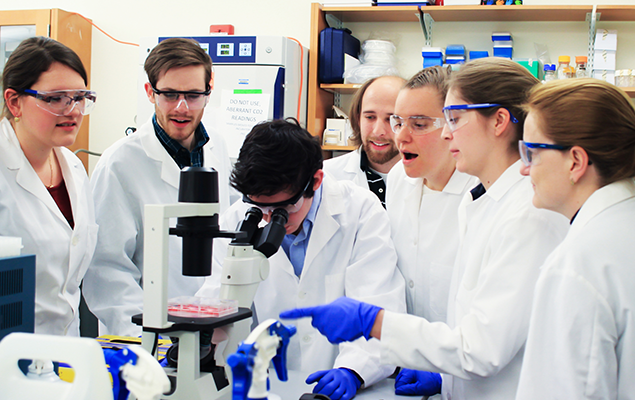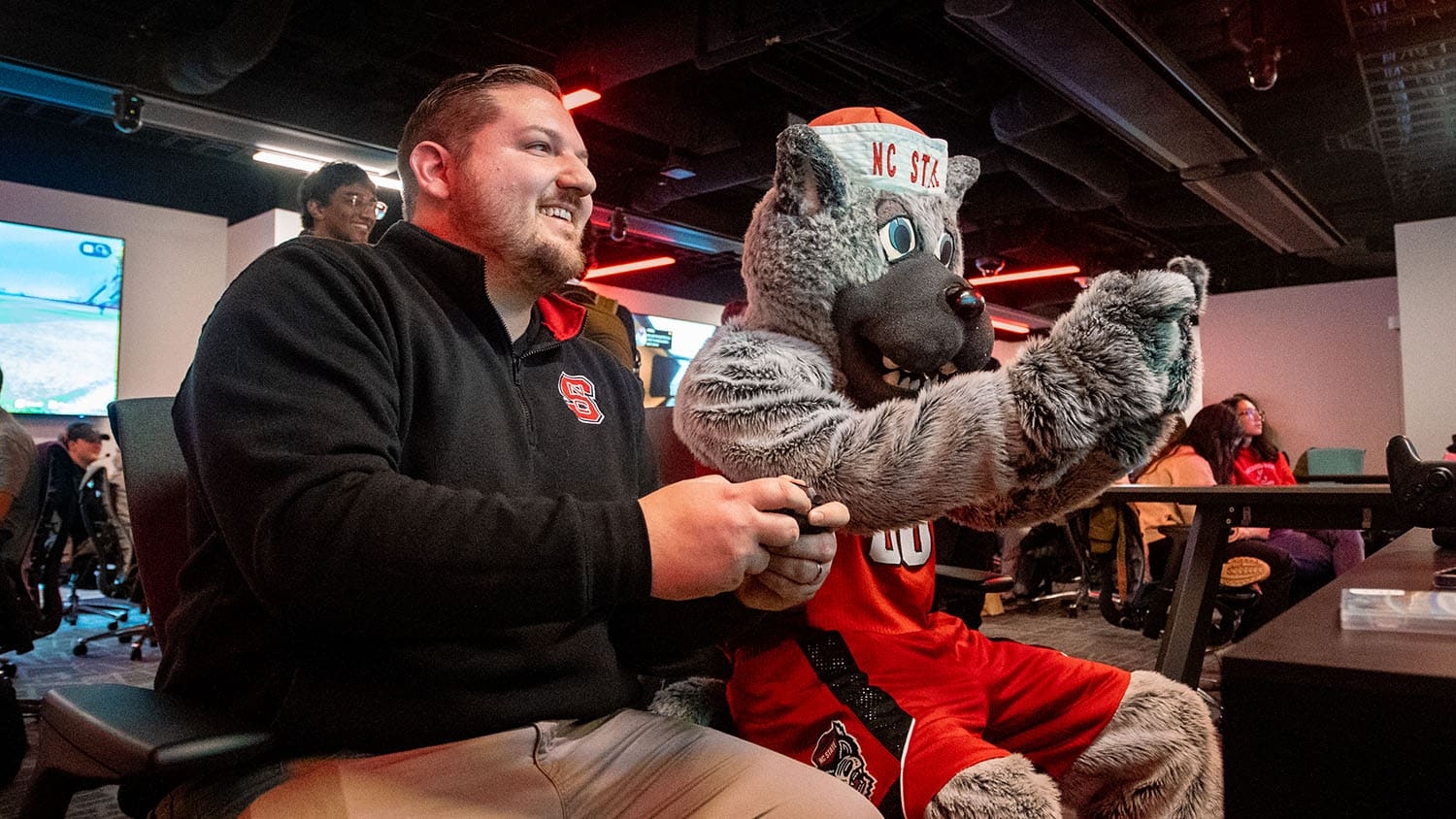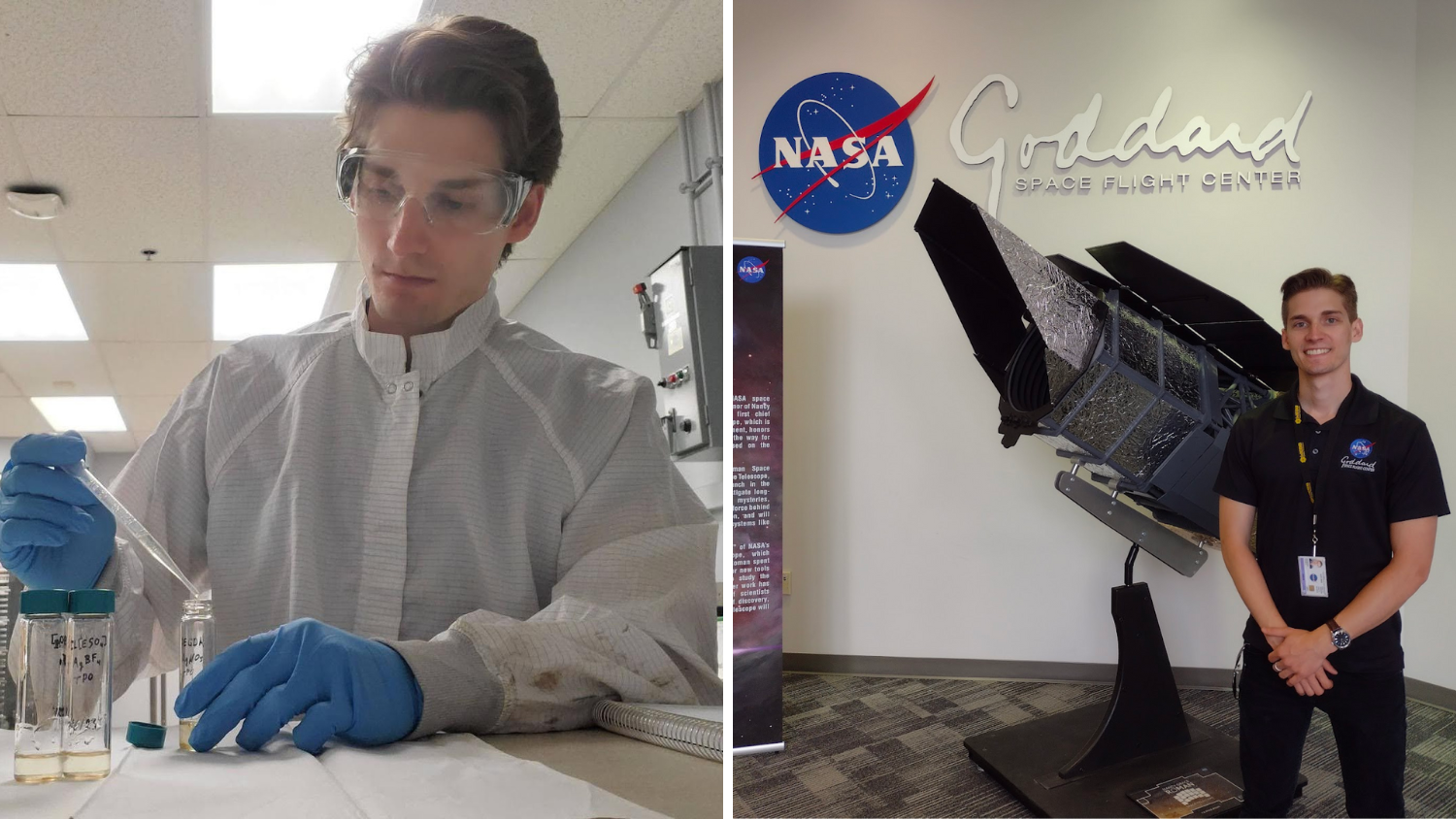Department of Biomedical Engineering establishes joint undergraduate degree

Dr. Nancy Allbritton calls NC State and UNC-Chapel Hill home.
As a professor and chair of the Joint NC State/UNC Department of Biomedical Engineering (BME), Allbritton works with faculty members and students from both universities on a daily basis.
 “This is about creating a transformative inter-institutional model, not two separate halves.”
“This is about creating a transformative inter-institutional model, not two separate halves.”
Dr. Nancy Allbritton
The joint graduate degree program in BME was established in 2003, bringing together the College of Engineering at NC State and the School of Medicine at UNC Chapel Hill. The BME Department extended into the College of Arts and Sciences at UNC in 2013, making it a three-way partnership. The joining of these institutions has provided biomedical engineering students with an opportunity to grow their knowledge and interest in the field while developing innovative opportunities in the pursuit of biomedical problems being faced.
An average of 20 students complete the graduate program each year. With the success and popularity at the graduate level, the BME department has established a joint undergraduate degree program.
“This is the first truly joint department between two higher learning institutions. Everything is joint,” said Allbritton.
“This is bringing the undergraduate department in line with the department and helps everyone feel they belong while promoting cohesiveness.”
Many universities have joint degree programs, but none give privileges to the other campus’ students, Allbritton said. The plan for the new undergraduate program would allow students at both universities to take classes on the partner’s campus while also giving students access to labs and other privileges only afforded to a student on that campus.
Focus areas
The department’s five research focus areas were chosen to build upon the strengths of the two universities.
Regenerative medicine builds new body parts for the aging and impaired and includes tissue engineering, stem cells, scaffolds and mechanobiology
Biomedical microdevices enables disease diagnosis that is faster, less expensive, more reliable and includes lab-on-chip devices, microfluidics devices and sensors
Pharmacoengineering, interfacing engineering and pharmaceutical sciences to develop safer and more effective medicine enhanced therapeutic delivery systems
Medical Imaging engineering permits non-invasive monitoring of the body with technologies such as ultrasound, PET, SPECT, MRI and photonics
Rehabilitation engineering links engineering and medicine to restore lost function with body biomechanics, artificial limbs and assistive devices
Industry appeal
Allbritton said the growing department is studying how other departments operate and talking to universities overseas on growing a global impact and making opportunities for students and faculty. The dean from Purdue University’s College of Engineering has visited to work with the department to develop ideas to do just that.
“This is about creating a transformative inter-institutional model, not two separate halves,” said Allbritton. “We are creating a true, single department and developing a model all universities will follow across the country and, one day, the world.”
Creation of entrepreneurial initiatives is one of the ways the joint department is looking to make an impact. These entrepreneurial opportunities are currently in the development stage as the department works to identify ways to interface and build relationships with industries. Preston Linn, industry academic coordinator for the department, said the goal of these initiatives is to make BME an asset to industry while establishing great new relationships and opportunities to connect and collaborate.
“Hopefully, this leads to industry internships and ultimately to jobs for graduates of the BME department, both undergraduate and graduate programs,” said Linn.
Building industrial partnerships is one way that these initiatives can be made. With the development of an industrial advisory board, the relationship and interaction between BME students and faculty members with industry will grow and improve. One of the focal areas for building these relationships is the Research Triangle Park (RTP).
“We believe that this becomes a great opportunity, halfway between the two campuses, where we can have students meet together as well as faculty and staff to establish relationships with the entrepreneurial culture that is in the RTP.”
The department has had some success with industry, with multiple startup companies coming from department faculty members and research.
Faculty members within the department have spun off more than 25 companies, while about 10 percent of the graduate students are involved in startups. Undergraduate students in the department have also created three spinoff companies based on departmental research.
Some of these companies include: SonoVol, Intellego, Plexigen, NDIMO, Cell Microsystems, BioFluidica, Mercury Science, Cortial Metrics, Protein Simple, Surgicorp and Novocor Medical Systems — a former senior design project, created in a class where students are encouraged to work on real problem solutions. Novocor uses its patented product, HypoCore, a rapid chilling device that cools saline during the infusion process to induce therapeutic hypothermia, to help Emergency Medical Service first responders save lives.
Department number growth
As the popularity of the department increases, so too will the number of students. More than 40 undergraduate students have signed up for the program at UNC Chapel Hill beginning this fall. An undergraduate degree in BME is already in place at NC State and sees 65-70 students graduate each spring.
Allbritton said the joint department is anticipating at least 80 new undergraduate students a year at each university.
“With NC State’s background in engineering and UNC’s medical school, students no longer have to choose between engineering or medicine, they can have both,” she said. “This undergraduate degree is a great opportunity to take a step back and start from scratch to grow the department and a program that brings the brightest to these powerhouse universities.”
The jointly conferred diploma for the degree will have both NC State and UNC listed as the represented universities.
Return to contents or download the Fall/Winter 2015 NC State Engineering magazine.
- Categories:


